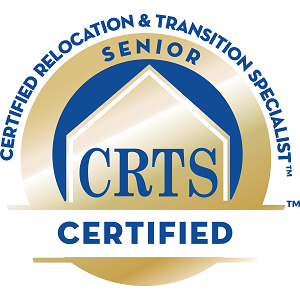National Wellness Month: Elements of Senior Wellness
It’s National Wellness Month! While senior health is essential all year long, August is the month we pay special attention to senior wellness. As we know, there is much more to staying healthy and well while aging than physical prevention.
National Wellness Month encourages us to look more closely at how we’re helping the seniors in our lives. For older adults, maintaining an active lifestyle can be relative, but it always involves physical movement, emotional fulfillment, and mental stimulation.
Most importantly, wellness includes having a loving support system that encourages seniors to live their best lives.
What is National Wellness Month?
National Wellness Month encourages people to focus on their well-being through self-care practices, which is why this month particularly applies to seniors. Wellness applies to everyone as aging seniors are more than capable of leading rewarding, active lifestyles.
Rather than emphasizing a particular model of wellness, National Wellness Month embraces every individual’s unique needs and abilities.
Together, we can help seniors adopt healthy habits that promote their best state of being, despite any limitations they may face.
What Does Wellness Look Like for Seniors?
Wellness in seniors falls into four basic categories:
● Physical wellness
● Mental wellness
● Emotional wellness
● Social wellness
Physical wellness encourages mobility and a stronger mind-body connection. A comprehensive 2018 research article found that seniors who exercise have lower risks of cardiovascular problems, stroke, diabetes, and even certain types of cancer.
Mental wellness is founded on logic, problem-solving, and intellectual stimulation. For seniors with Alzheimer’s or dementia, mental wellness can include memory care to delay the progression of their condition.
Mental fitness is practiced in various forms, from puzzles and crosswords to playing video games. A 2019 study for Alzheimer’s research found that 3D video games can improve cognitive function and memory by increasing gray matter in the brain.
Emotional and social wellness often intersect, so providing more opportunities for seniors to connect with others improves their well-being and lowers their risk of anxiety and depression. Having outlets to discuss their mental health can also help improve their emotional well-being.
One of the struggles aging adults face is a loss of autonomy. As their health declines or they need more assistance, they’re less likely to take an active role in their wellness. So encouraging seniors to take an active role in their well-being can result in more independence.
National Wellness Month is an opportunity to start meaningful conversations about what seniors would like in their lives. Giving them a voice and letting them know their wants, needs, and opinions are valued will help them maintain positive mental health.
Why Seniors Should Practice Wellness
Every senior should practice wellness to improve their quality of life. Many people fall behind on self-care as they age, especially if they have caregivers or family members in charge of certain aspects of their lives.
Although some may need assistance, seniors can still be a part of their self-care. Seniors will build confidence and engage more when actively participating in their wellness plans.
Active participation in wellness activities gives seniors a sense of purpose, excitement, and novelty in their lives. It also lowers their risk of injury and illness by boosting immunity, improving mobility, and teaching them preventative care.
How Seniors Can Improve Their Wellness
Everyone’s health is unique, but these four tips can help every senior improve their health and wellness this National Wellness Month.
1. Work With Physical Limitations
One of the biggest obstacles to physical wellness for seniors is mobility impairments. Rather than see their mobility as a hurdle, seniors can learn to adapt their exercises to suit their abilities.
Chair workout routines for seniors are a fantastic way for older adults to stay active, even with a limited range of motion.
Discuss options with their physician about exercises they can perform. Even just 20 minutes of exercise a day can profoundly impact their physical and mental well-being.
When possible, head outdoors for some physical exercise. Take a walk, enjoy the sunshine, and marvel at the turn of the seasons. There are lots of changes to wildlife and local plants worth noticing.
- Socialize More
Being social helps seniors stay cognitively alert and emotionally engaged. Whether it’s spending time with their grandchildren or even being with a beloved pet, seniors who socialize experience less isolation, depression, and anxiety.
Social groups for seniors can also be a great way to boost wellness. Look for opportunities in your community, like volunteering and taking classes at a senior center.
- Eat a Balanced Diet
Some seniors may fall into the habit of eating junk food or the same carb-heavy meals each day. Considering the importance of variety in a diet, providing seniors with different food options is crucial, so ensure they’re keeping a balanced diet with plenty of fruits and vegetables.
Cooking can also be a wonderful hobby as it often encourages older adults to stand up and be more active.
- Try Something New
Whether they’re bedridden or always on the move, seniors need to encounter new things in their lives to feel happy and optimistic. You can improve their mental outlook by visiting new places, doing a fun activity, or going on a trip together.
As the seasons change, embrace the holiday spirit. Research national days that are coming up and plan fun activities around them.
To Learn More
For more information on senior health and year-round care suggestions, join the Reflections mailing list by subscribing here.














